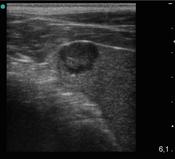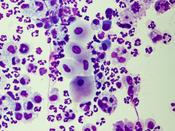Emaciation and reduced performance
Examinations for emaciation and reduced performance
The symptom complexes of emaciation and performance depression are two common reasons why patients are presented to us. There are usually no obvious recognizable diseases in the foreground, which is why the diagnosis of each patient is a new challenge and requires a high degree of experience on the part of the examining veterinarians.
Causes of emaciation can include: high worm burden of the gastrointestinal tract, sand deposits in the intestine, chronic intestinal diseases, wasting diseases such as neoplasia (tumors), stomach ulcers, chronic kidney disease, chronic inflammation, chronic pain, geriatric problems, endocrine diseases and metabolic diseases and many more. Accordingly, diagnostics are usually carried out using a variety of examination methods such as laboratory diagnostics, X-rays, ultrasound (Fig. 1), endoscopy, puncture of body cavities, organ biopsies, cytology of punctates and biopsies (Fig. 2) and much more. In these cases, we regularly work closely with other institutes of the Free University (Institute of Animal Pathology, Institute of Animal Nutrition, Institute of Parasitology, Institute of Microbiology, etc.) or with specialized institutes nationwide.
Performance depression can also have a variety of causes such as: Diseases of the upper and lower respiratory tract, heart, muscles, liver, metabolism and endocrine organs, blood and blood-forming organs, etc. Many of these diseases can only be diagnosed by stress tests (stress endoscopy, cardiac ultrasound and ECG under stress (Fig. 3), blood values after stress) or by special functional tests.


